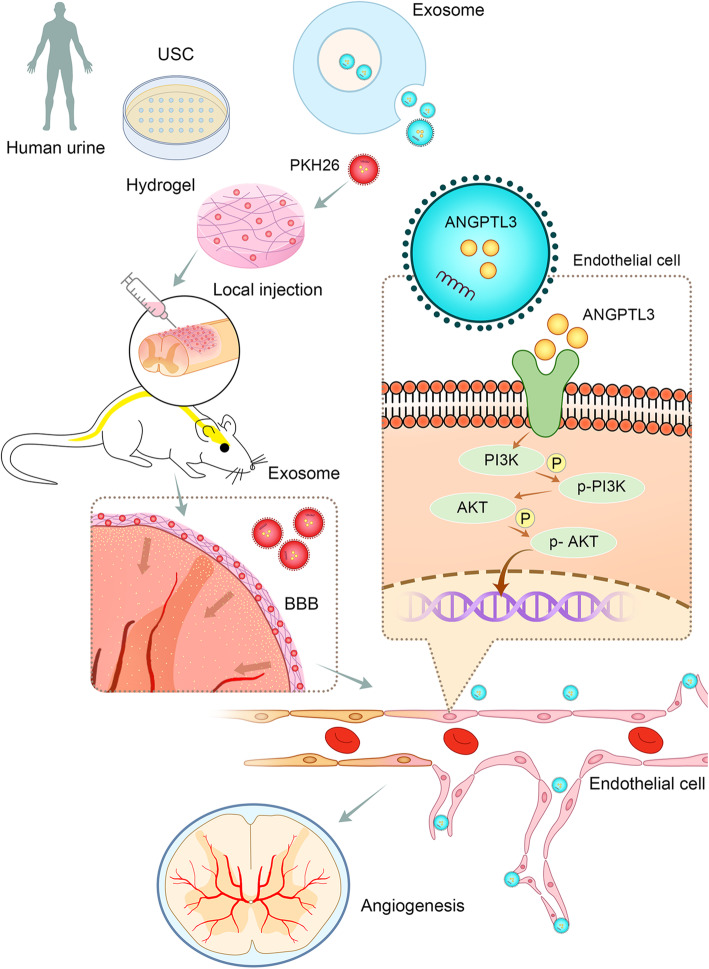Fig. 9.
Schematic diagram showing the role of exosomal ANGPTL3 from human USC-derived exosomes in mediating the protective effect on functional recovery after spinal cord injury by promoting angiogenesis. USC-derived exosomes enriched with ANGPTL3 and are imbedded in hydrogel and used to cover the injured spinal cord surface. The exosomes can cross the spinal cord blood-brain barrier (BBB) and be taken up by spinal cord microvasculature endothelial cells, where ANGPTL3 induces PI3K and AKT phosphorylation and subsequently promotes angiogenesis

